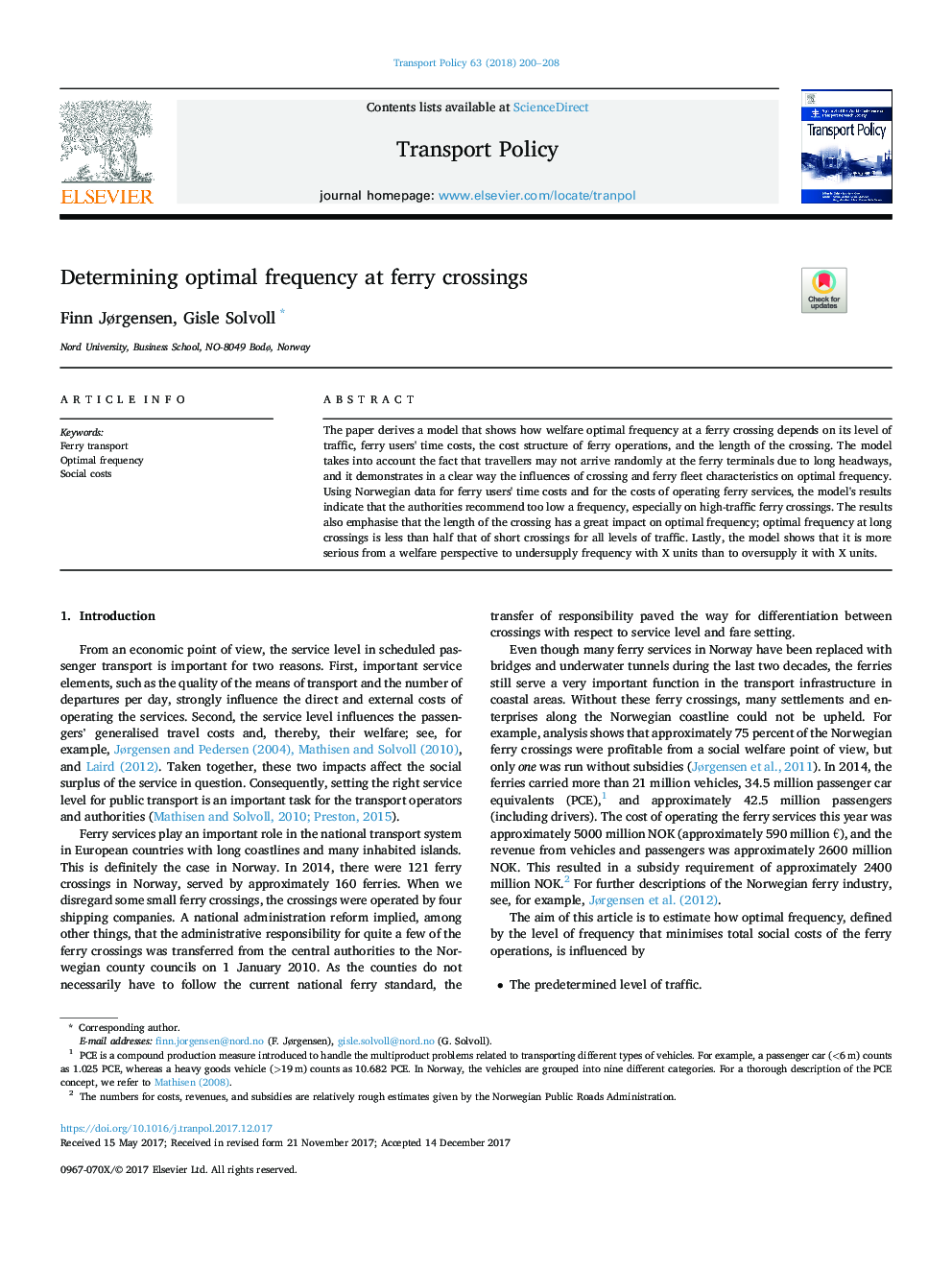| Article ID | Journal | Published Year | Pages | File Type |
|---|---|---|---|---|
| 7497242 | Transport Policy | 2018 | 9 Pages |
Abstract
The paper derives a model that shows how welfare optimal frequency at a ferry crossing depends on its level of traffic, ferry users' time costs, the cost structure of ferry operations, and the length of the crossing. The model takes into account the fact that travellers may not arrive randomly at the ferry terminals due to long headways, and it demonstrates in a clear way the influences of crossing and ferry fleet characteristics on optimal frequency. Using Norwegian data for ferry users' time costs and for the costs of operating ferry services, the model's results indicate that the authorities recommend too low a frequency, especially on high-traffic ferry crossings. The results also emphasise that the length of the crossing has a great impact on optimal frequency; optimal frequency at long crossings is less than half that of short crossings for all levels of traffic. Lastly, the model shows that it is more serious from a welfare perspective to undersupply frequency with X units than to oversupply it with X units.
Keywords
Related Topics
Social Sciences and Humanities
Social Sciences
Geography, Planning and Development
Authors
Finn Jørgensen, Gisle Solvoll,
